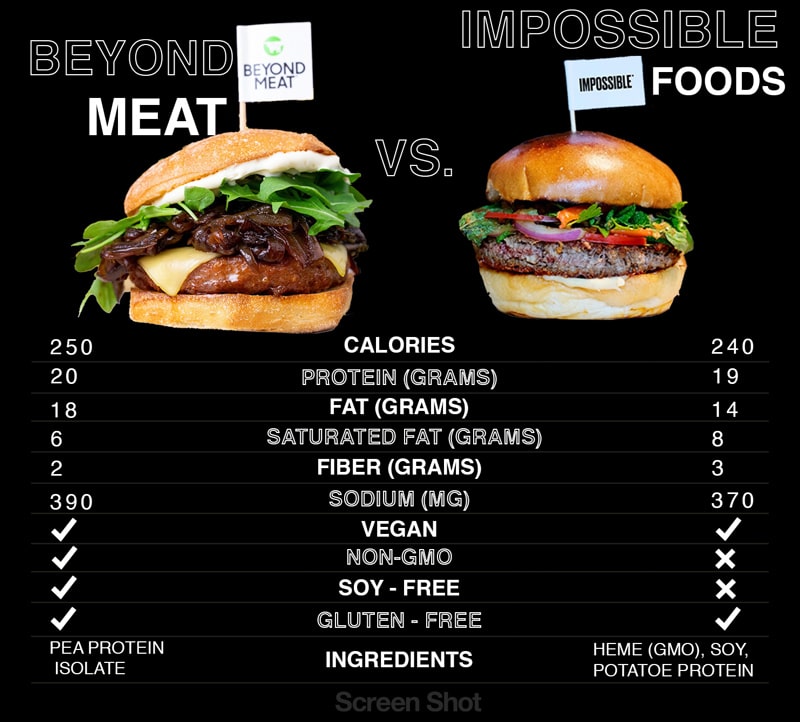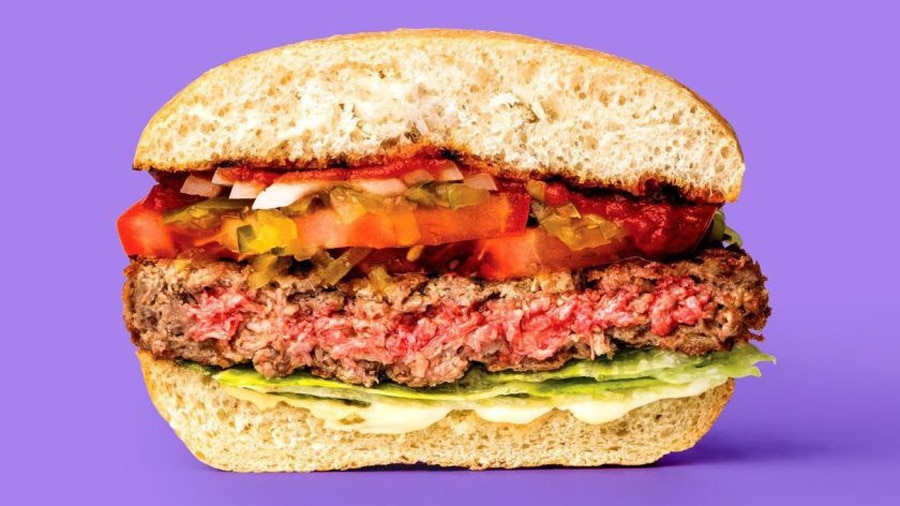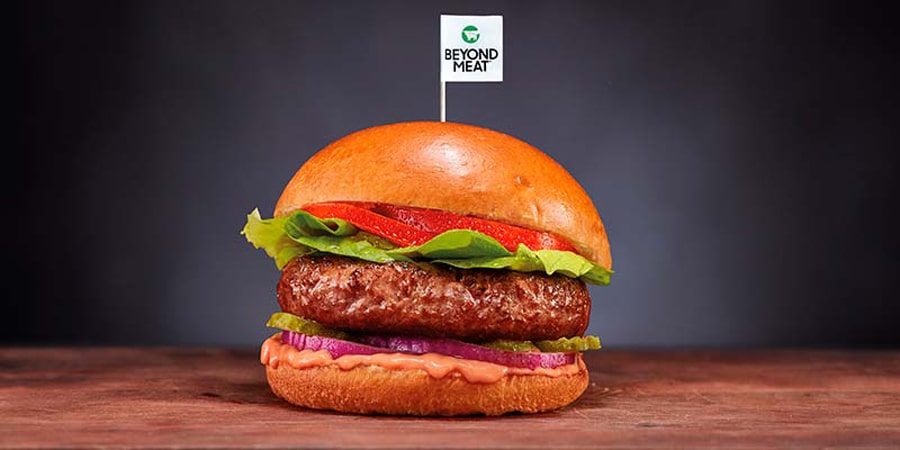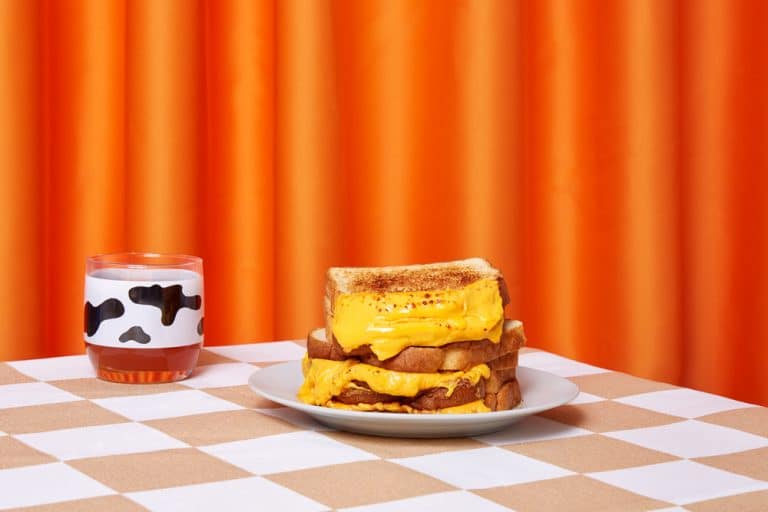Impossible Foods vs Beyond Meat, everything you need to know
The alternative meat industry is on a mission
If there’s one thing we know for sure, it is that our mainstream, mass-scale meat industry is bad for the planet. Huge swaths of land filled with cattle are not only taking up crucial space for agriculture, but our favourite animal to eat, the cow, namely beef when it’s on the shelf, is a huge emitter of CO2.
In response to the global call to reshape our meat-eating habits, the last few years have seen major players crop up in the alternative meat industry, and the biggest among them are competitors Impossible Foods and Beyond Meat.
Yes, they both have very similar names, which can sometimes make things just a tad confusing. They were both founded in California, US, around the same time, with Impossible Foods founded in 2011 by Patrick O. Brown, and Beyond Meat founded in 2009 by Ethan Brown (no, the two founders are not related).
Now both the gigantic, heavily venture capital-funded and pumped companies are making a lot of noise around the world, but we’re here to clarify exactly what their story is all about, what their products have inside them, if they really are better for us and the environment, and what we should expect over the coming years from the booming alternative meat industry.
Impossible Burger vs Beyond Burger

The ultimate question that everyone is asking at the moment is which company has the best meat products, and probably because we all love burgers so much, the Impossible Burger vs the Beyond Burger is all the hype.
While it’s impossible to answer that question, as it’s largely a matter of taste, there is some information about what each company stands for, what ingredients it uses and how it produces its alternative meat that can help you decide whether you are an Impossible Burger devotee or a Beyond Burger fan.
Looking online, it seems that most search queries are about which alternative meat, and burger, is healthier for you. So we decided to break it all down in the chart below and take a little deep dive into each of the meat’s ingredients.
Impossible Foods ingredients
As Impossible Foods state on their website, “Impossible Burger is made from proteins, flavours, fats, and binders, like almost every burger you’ve eaten in your life. The key difference? Our ingredients are derived from plants.”
The protein in Impossible Foods’ alternative meat products is made largely from soy and potatoes. The flavouring is made from Heme (also called haem), which is the molecule that makes meat taste the way it tastes and gives it that distinct flavour and smell. In order to make the meat as deliciously fatty and oily as meat often is, Impossible Foods use oils from coconut and sunflower. And finally, in order to bind the ingredients together in that juicy consistency that is nor too dense or fluffy, Impossible Foods use Methylcellulose and food starch.

Want the full ingredients list? You got it.
Water, Soy Protein Concentrate, Coconut Oil, Sunflower Oil, Natural Flavors, 2% or less of: Potato Protein, Methylcellulose, Yeast Extract, Cultured Dextrose, Food Starch Modified, Soy Leghemoglobin, Salt, Mixed Tocopherols (Antioxidant), Soy Protein Isolate, Vitamins and Minerals (Zinc Gluconate, Thiamine Hydrochloride (Vitamin B1), Niacin, Pyridoxine Hydrochloride (Vitamin B6), Riboflavin (Vitamin B2), Vitamin B12).
Is the Impossible Burger vegan?
You bet it is. One of the missions of the founder of Impossible Foods is to create a world of alternative meat products that are second to none to real meat. Understanding full well that meat lovers will never compromise on their meat quality and experience, Patrick O. Brown engineered the perfect vegan, totally meat-free alternative meat.
Beyond Meat ingredients
Beyond Meat writes on its website, “Protein, fat, minerals, carbohydrates, and water are the five building blocks of meat. We source these building blocks directly from plants, to create delicious, mouthwatering plant-based meat.”
Very much in the same light as Impossible Foods, Beyond Meat also uses similar components to create its alternative meat products: protein, flavouring, and fat, but unlike its competitor, Beyond Meat also includes carbohydrates and minerals to the mix.
For its protein, Beyond Meat uses a mixture of peas, mung beans, fava beans and brown rice. Its fat components are made out of cocoa butter, coconut oil, sunflower oil and canola oil. In order to recreate both the taste and also the nutritional value of meat, Beyond Meat adds minerals, including calcium, iron, salt and potassium chloride. Completely free from GMOs, the meat product’s flavouring comes from beetroot juice extract, apple extract and what it calls “natural flavours.”
To hold all of the ingredients together in a meat-like texture, Beyond Meat uses potato starch and Methylcellulose, which is a plant fibre derivative.

Where to buy Impossible Foods products and the Impossible Burger?
As a US-based and born company, North America is the current stronghold market of Impossible Foods. The company’s meat products, and specifically the Impossible Burger are sold across the US at food chains and restaurants, including Applebees, Red Robin, The Cheesecake Factory and Burger King.
Impossible Foods products are also sold throughout supermarkets and local food shops. While it did take a few years for the company to roll out across grocery shops, as of September 2019, it can be found at Gelson’s, a southern California grocery chain, Safeway, Vons, Jewel-Osco and Wegmans.
Impossible Foods not ready for Europe
Unlike its competitor, Impossible Foods has not yet rolled out in Europe as it currently awaits approvals from the EU’s food safety authority to market its soy leghemoglobin (the Heme flavouring ingredient it uniquely manufactured), which is the iron-containing molecule made using genetic engineering yeast.
Where to buy Beyond Meat products and the Beyond Burger?
Beyond Meat is easily accessible today, with its raw alternative meat products, including mince mix, sausages and burgers selling on the shelves of supermarkets across Europe, the US and Asia. You can also find Beyond Meat at many restaurants and fast-food chains, including Wendy’s in the US, and Honest Burgers in the UK.
Beyond Meat expands to Europe
Giving it a massive competitive advantage over Impossible Foods, Beyond Meat is already selling its alternative meat products in Europe and has, on 10 June, announced it will be expanding its production to Europe amid a massive meat shortage due to COVID-19, with a Dutch plant due to be opened toward the end of 2020.
As Beyond Meat does not use any genetically modified ingredients but creates its flavours from the minerals and flavourings, it has beaten its competitor to the European market.





